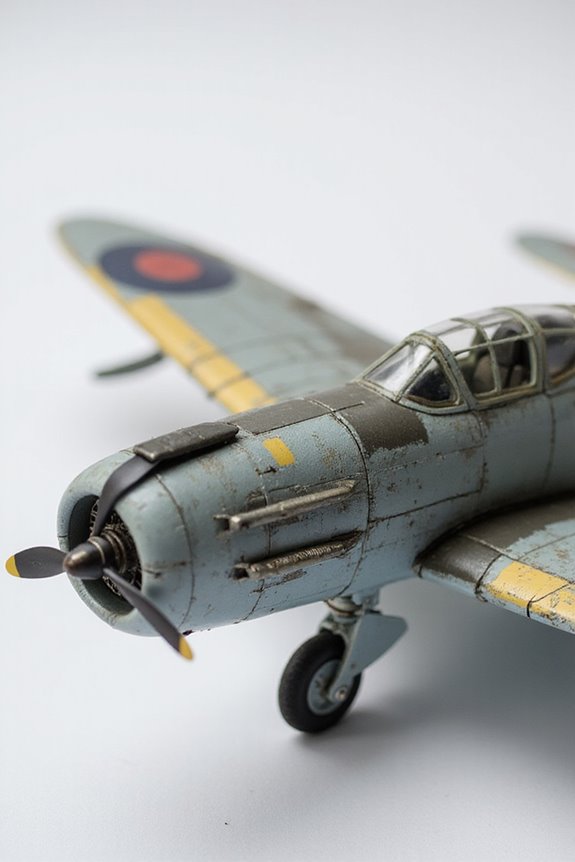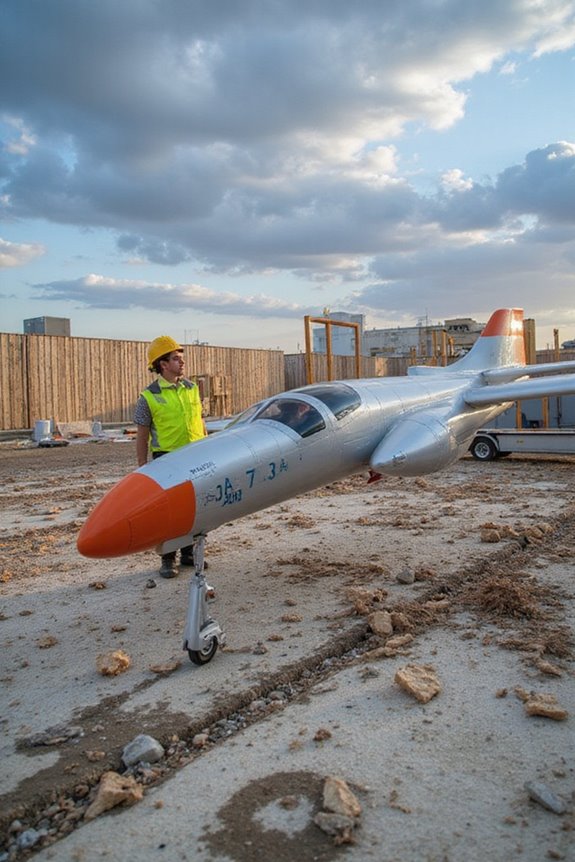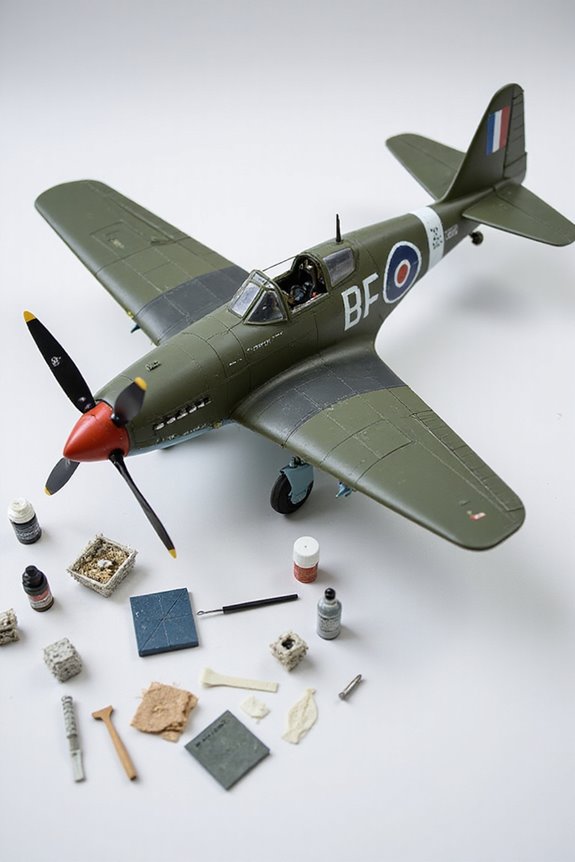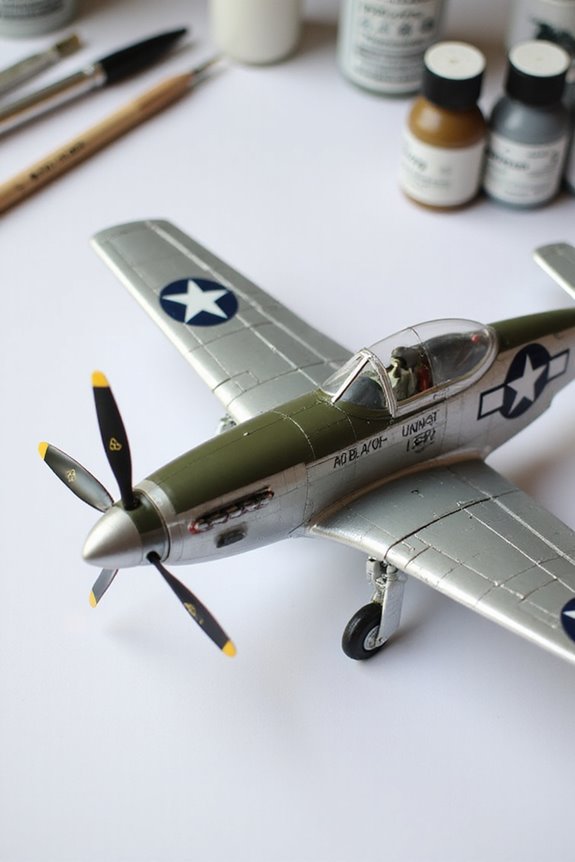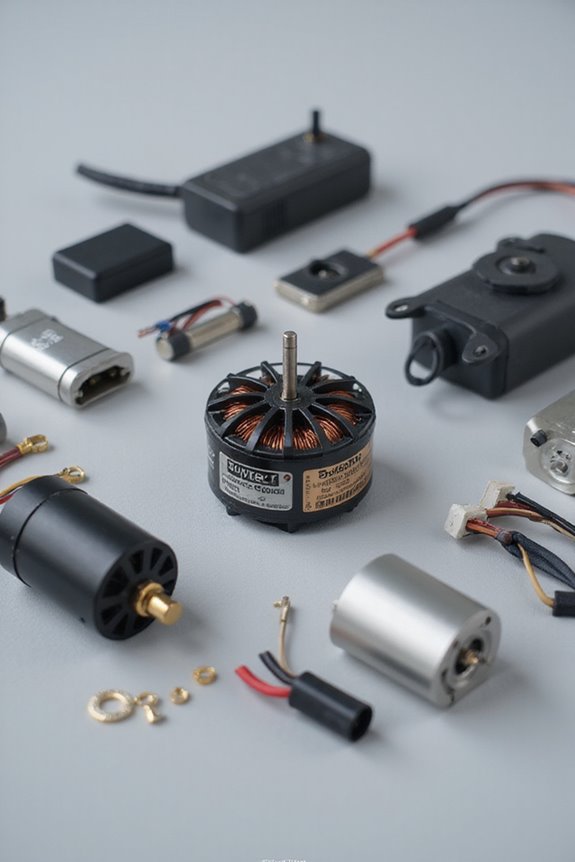When we’re hunting for a model aircraft seller, we should consider a few key factors. First, check their reputation—customer reviews can reveal a lot about credibility. Next, we need to assess product quality by examining materials and fit. Don’t forget legal compliance; understanding FAA regulations is essential. Finally, good customer support can save us time and hassle. Trust us, knowing what to look for can make a world of difference in our flying adventures. Stick around to explore more!
Key Takeaways
- Evaluate the seller’s experience and reputation through customer reviews and feedback for credibility.
- Ensure product quality by verifying materials, scale, and engineering for durability and realism.
- Check for compliance with legal regulations, such as FAA registration and safety standards.
- Compare prices against industry benchmarks to ensure you receive fair value for the model.
- Look for responsive customer support with knowledgeable staff and clear resolution processes.
Evaluating Seller Reputation
How can we trust a seller in the world of model aircraft? First off, we should look at the seller’s experience. Sellers who’ve been around for a while often have better relationships with suppliers, which can mean better products and support. Don’t you love a reliable go-to shop?
Customer reviews are also key. High ratings indicate a seller’s credibility, while negative feedback can reveal issues. It’s like reading the fine print!
Next, let’s consider market influence. Sellers who consistently align their prices with market trends usually have a better grasp of what we need as buyers. Remember, if something seems too good to be true, it probably is. Sellers should also be open about product details—transparency is our friend in this hobby! Additionally, look for sellers that offer warranty options as this can ensure product support and enhance your buying confidence.
Assessing Product Quality
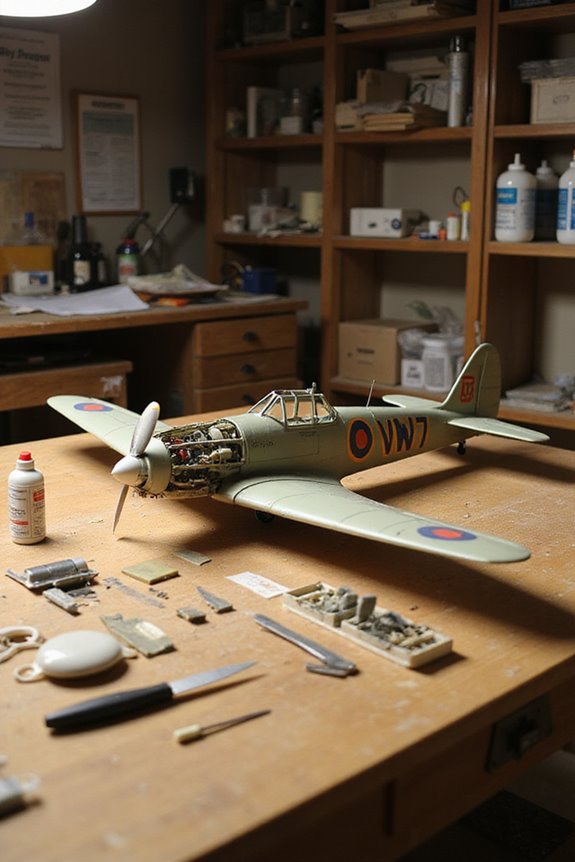
Trusting a seller is just half the battle; the other half lies in evaluating product quality. We’ve gotta focus on product authenticity. First off, check the scale and dimensions of the model; they should match the real aircraft closely. Look for details like crisp panel lines and accurate cockpit features. If it looks right, it’s more likely built right, too!
Next, let’s think about quality assurance. Examine the materials used; they should be durable enough to survive our enthusiastic handling. Models that fit together seamlessly without gaps show excellent engineering. Plus, models that faithfully replicate the original’s aerodynamic shape? That’s a win! Additionally, consider the material quality used in the kit, as high-quality components greatly enhance the model’s durability and realism. In short, if a model passes these tests, it’s likely a fantastic addition to our collection.
Understanding Legal and Safety Compliance
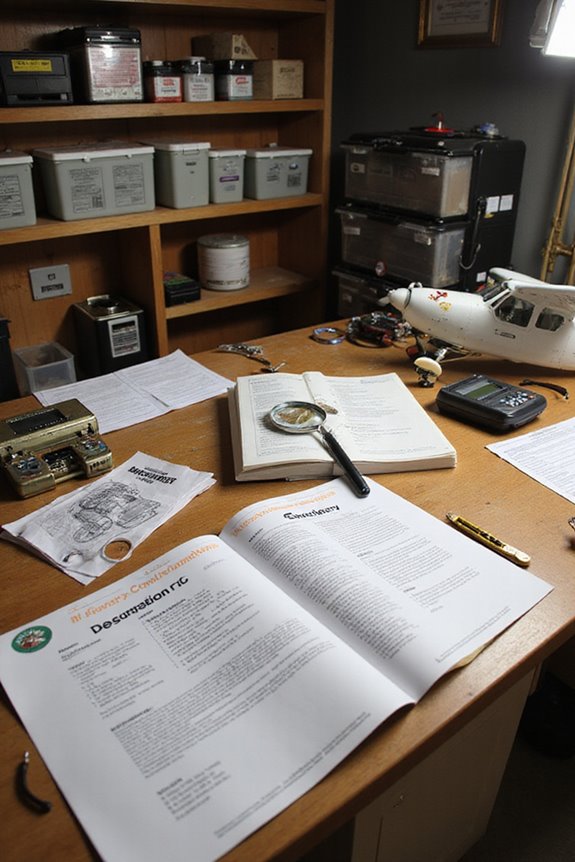
When we immerse ourselves in the world of model aircraft, understanding legal and safety compliance isn’t just a side note—it’s a must. So let’s avoid any “oops” moments! If our aircraft weighs more than 0.55 lbs, we need to be FAA-registered—don’t forget that five bucks!
We’ve also got to keep the flying height under 400 feet, and no buzzing around airports unless we’re on a secret mission (just kidding, definitely not)!
Sellers should provide us with complete legal documentation, including service history and maintenance records. It’s like showing proof of our model’s good upbringing.
In this hobby, safety standards aren’t just guidelines; they’re our rules for a fun and legal flying experience!
Analyzing Pricing and Value
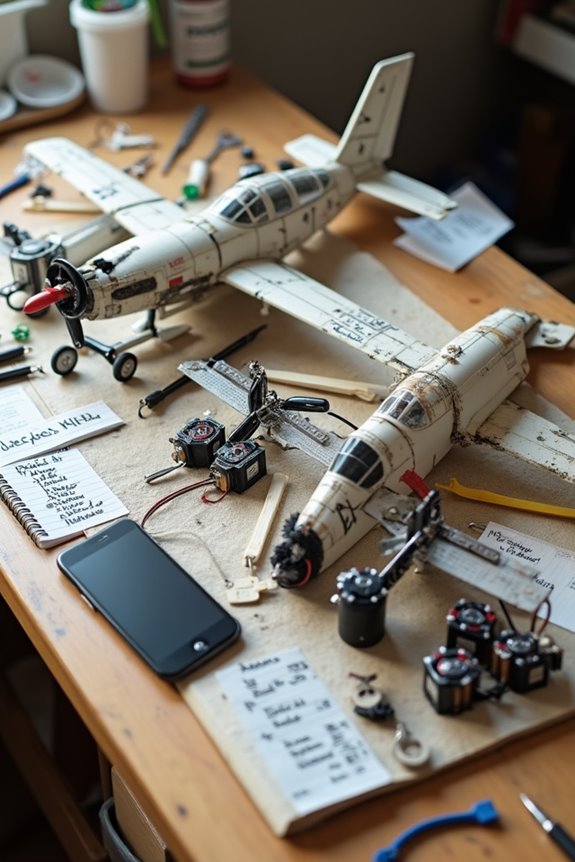
As we navigate the skies of model aircraft ownership, understanding pricing and value is key. To make informed decisions, we should look at price comparison against industry benchmarks. Some sellers might inflate prices on common models and mislead us. Check reputable sources, like Aircraft Bluebook, to gauge fair market value.
Brand matters too; for example, Gemini Jets and JC Wings have set pricing standards we can rely on. A pristine model can cost considerably more than a used one. Don’t forget to factor in condition, rarity, and even packaging—those little details can elevate the price. Staying aware of market trends helps us identify when to buy or negotiate. Happy flying—and shopping!
Checking for Customer Support and Service
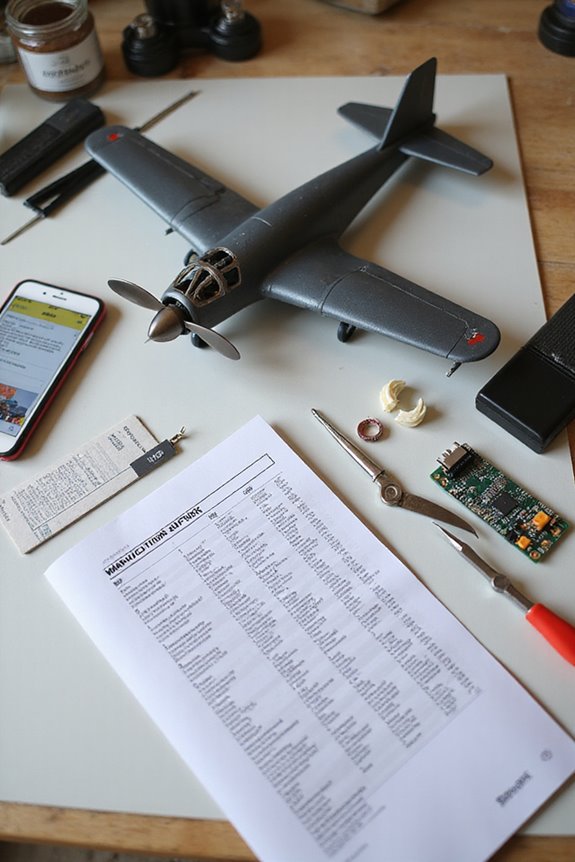
How do we ascertain we’re getting reliable support when buying model aircraft? First, we should explore customer feedback. Positive reviews are like gold, hinting that the seller provides excellent service. Negative feedback? That might reveal areas needing improvement.
We also need to look at communication channels. A seller with multiple ways to reach them—like email, phone, or even chat—is a bonus. Quick responses? Absolutely essential! Clear communication can save us from misunderstandings.
Let’s not forget about product knowledge; knowledgeable staff can guide us through our purchases. Finally, we want to know there’s a solid process for resolving issues. Problems happen; it’s how they handle them that shows their true colors.
Considering Technological Features
So, we’ve got our customer support sorted. Now, let’s talk tech! When looking for model aircraft, we should consider advanced propulsion systems. Electric motors, especially brushless, provide efficiency and extend our flight times. Who doesn’t want a longer airborne adventure?
We also benefit from new materials like lightweight composites, which boost both strength and performance. Plus, have you heard about solar power? It’s emerging as a cool option, promising record flight times without the greenhouse guilt.
And don’t forget those innovations in control systems! Features like SAFE technology help stabilize our aircraft and keep us in the air. Additionally, consider the DLE 55RA as it offers impressive power output, making it suitable for serious model airplane enthusiasts. So, when browsing sellers, let’s prioritize those cutting-edge technologies that take our flying experience to new heights!
Reviewing Return and Warranty Policies
When we plunge into model aircraft purchases, we can’t ignore the importance of return and warranty policies. A solid return window—around 30 days—is essential. It allows us to send back unused, unassembled models if they don’t meet our expectations.
Before returning, we often need return authorization, which speeds up processing. If something arrives damaged, contacting support within 7 days is crucial. Otherwise, we risk losing our right to a refund or replacement.
Let’s not forget those sneaky restocking fees. They can nibble away at our refunds, especially if we change our minds. By understanding these policies, we can fly high without the fear of crashing down on costly returns!
Frequently Asked Questions
What Should I Know About Shipping Options and Timeframes?
When considering shipping options, we’ve gotta evaluate different shipping methods for fragile models and factor in delivery times. It’s essential to plan ahead for potential delays, especially during holidays or adverse weather conditions.
How Do I Identify Counterfeit Model Aircraft Sellers?
When it comes to avoiding trouble, we should always stay alert for counterfeit warning signs. By using seller verification techniques, we can guarantee quality and authenticity before making any purchases. It pays to be cautious!
Are There Online Communities for Model Aircraft Enthusiasts?
Yes, there’re numerous online forums and hobby groups where we can connect with fellow model aircraft enthusiasts. These communities share valuable insights, tips, and experiences that can enhance our modeling journey and knowledge.
Can I Find Reviews Specific to the Seller’S Customer Service?
We can definitely find reviews specific to a seller’s customer service by checking customer feedback and service ratings on various platforms. These insights help us make informed decisions regarding our purchases in the model aircraft community.
What Are Common Pitfalls When Purchasing Model Aircraft?
When we immerse ourselves in model aircraft purchasing, we often encounter pitfalls like poor quality assurance and confusing return policies. Let’s avoid impulse buying, misleading descriptions, and unmet expectations to guarantee a satisfying experience together.

